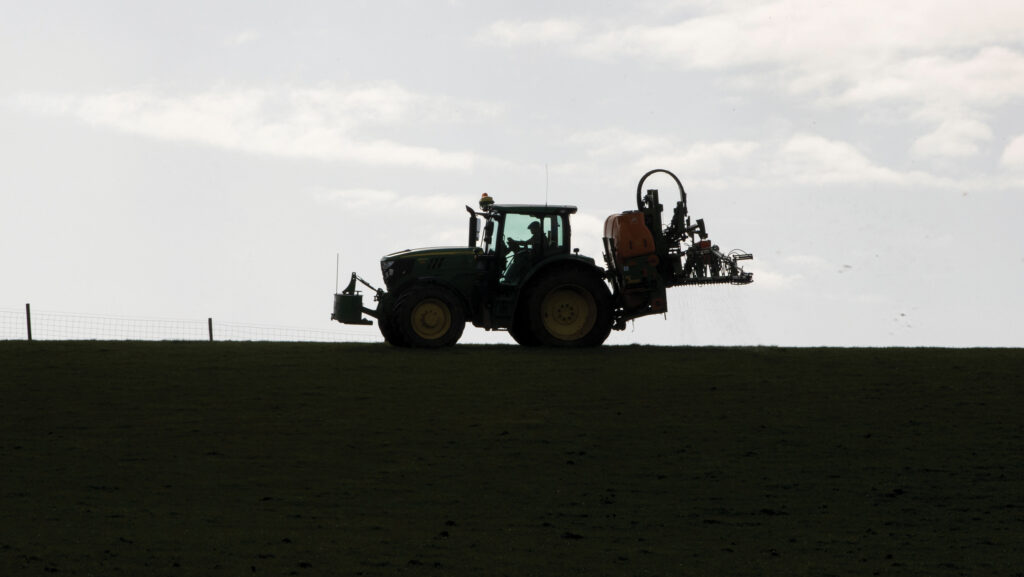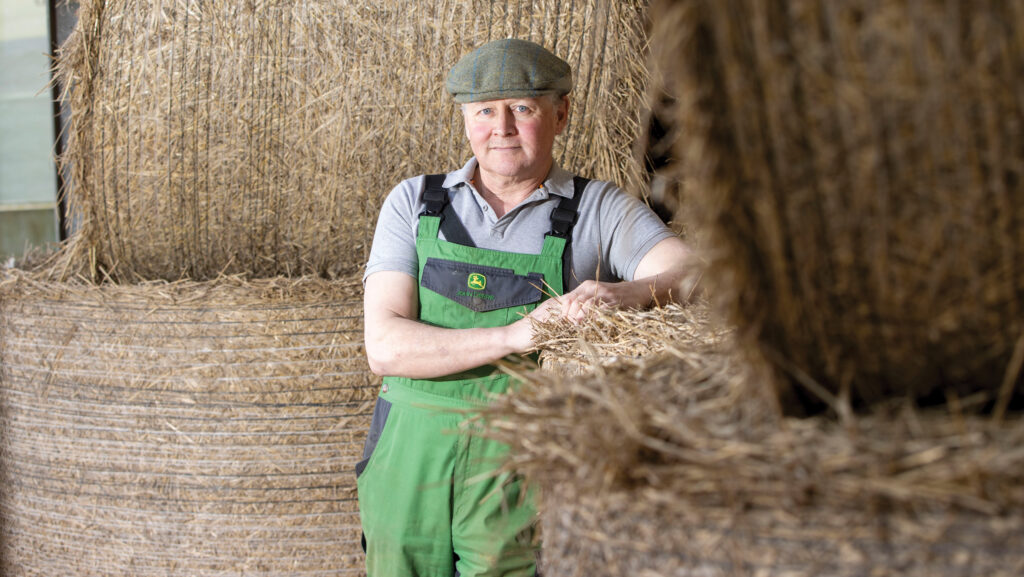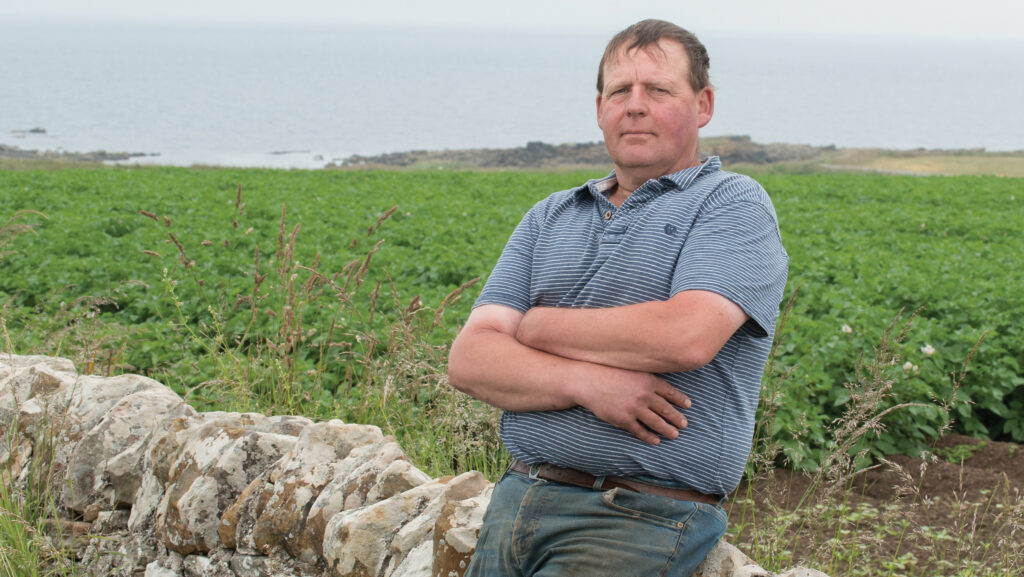Scottish agricultural support scheme changes: What we know
 © Jeff Holmes
© Jeff Holmes The Scottish government has provided further detail on its post-Brexit farm support policy. Here consultants and policy experts give an insight into this summer’s update and their views on the changes
While England has reached the half-way point in the transition from EU farm support to a UK-based policy, the Scottish government has opted for a more cautious, though rapid, approach.
The longer release time of information has frustrated farm businesses. Farmers Weekly’s 2024 Transition Project annual survey recorded concerns with Holyrood among 95% of Scottish farmers and growers, and calls for more information.
See also: Analysis: Faster progress needed on Transition
But MSPs have since backed and passed the Agriculture and Rural Communities (Scotland) Bill, voting it through the Scottish parliament this summer.
It was granted Royal Assent and became an Act on 30 July.
Agricultural Industries Confederation Scotland policy manager Ian Muirhead says the Act sets out the framework for a future agricultural support system that retains direct payments while increasing conditionality linked to environmental outcomes – for example, reducing emissions.
“We are still missing some of the details – for example, on funding,” Ian says.
“That depends on the new UK government and the upcoming Budget [30 October] when the new chancellor will set out allocations for agricultural support budgets across the UK nations.”
The schemes will be an evolution of existing support schemes, with no “cliff edges” in financial support, he says.
The scheme is based on the Scottish government’s vision for agriculture that was announced in 2022.
The resulting schemes aim to encourage farm businesses to cut emissions, enhance biodiversity and produce more food, more sustainably.
The Scottish government’s vision for agriculture
- Support for active farming and food production with direct payments
- Support for land use change that contributes to climate and biodiversity goals
- New conditionality requirements for at least half of all funding by 2025
- Conditionality targets for biodiversity gain and lower emissions production
- Regulatory and support mechanisms that deliver targeted emissions cuts
- Continued alignment with EU policy developments
- More localised supply chains to add value and cut food miles
- Increased organic production and lower use of agrochemicals on conventional units
- Better business resilience
- Deployment of technology and innovation
- Use of whole-farm approach to develop the skills needed for regenerative and sustainable farming, changes of land use, natural capital funding and adaptation to the changing climate
Cross-compliance and conditionality
Farms entering the scheme will have to meet existing cross-compliance rules to ensure work carried out reaches minimum standards on sustainable farming activities, environmental protection, animal health and welfare.
They will also have to abide by new conditionality rules to receive payments.
These include:
- Tighter calving intervals to qualify for the Scottish Suckler Beef Support Scheme
- Requirement to carry out Whole Farm Plans
- Additional conditions for peatlands and wetlands.
The Scottish government’s Fair Work First policy must also be met, so farmer recipients must demonstrate they are paying workers at least the real Living Wage.
Four-tier farm scheme
The scheme itself comprises four tiers:
- Base
- Enhanced
- Elective
- Complementary.
Tier 1: Base-level direct payment
The aim of the base level is to support active farming and food producers. It is a universal, entry-level payment for undertaking agricultural activity while meeting minimum essential standards on:
- Sustainable farming activities
- Protecting the environment
- Animal health and welfare improvements.
Tier 1 is effectively a rebranded Basic Payment Scheme (BPS), with an enhanced level of cross-compliance.
The existing BPS remains in place with enhanced conditionality until 2027, after which it will transition to the base-level direct payment.
It will be underpinned by the Whole Farm Plan – a conditionality requirement.
This covers a set of plans and audits designed to help producers farm more sustainably by understanding the environmental impact of their business in relation to carbon outputs and biodiversity.
Farmers will have to confirm on their Single Application Form that, by 15 May 2025, they will have completed at least two baselining activities from a list of five options, including:
- Carbon audits
- Biodiversity audits
- Soil analysis
- Animal health and welfare plans
- Integrated pest management (IPM) plans.
Where existing equivalent plans are in place, for example for quality assurance schemes, they will qualify.
Agrovista rural business and environmental consultant Lewis Butlin says there will be many farmers who need to act between now and next spring in order to receive their BPS in full.
But for most, the Tier 1 requirements are not as onerous as they sound.
For example, farmers who have taken part in the government-backed National Test Programme, Preparing For Sustainable Farming (PSF) scheme, will already have completed the necessary soil analysis activities, says Lewis.
To qualify for support under the Scottish Suckler Beef Support Scheme, producers will also need to demonstrate they fall within a new maximum calving interval of 410 days.
This will be measured on an individual animal basis and is designed to improve sustainability through efficiency, which in turn helps to cut emissions.
Again, the target should be achievable for Scotland’s suckler producers because the current average at 400 days is within the scheme requirement.
Farmers and growers on peatlands and wetlands will also face new cross-compliance measures to help protect vital carbon stores, Ian points out.
The changes impose a ban on a range of activities on peatland and wetland areas including:
- Ploughing, cultivations and reseeding
- New drainage and maintenance of existing systems that cause further drying out of the peatland
- Application of pesticides and fertilisers including manures, lime and soil conditioners
- Creation of new roads and tracks including vehicle rutting exposing the soil
- Activities that cause damage to the vegetation cover exposing the soil
- On wetlands, disruption of connections between rivers/watercourses and wetlands that will lead to drying out.
Tier 2: Enhanced level direct payment
Tier 2 will be phased in from 2026 and takes over from the existing greening top-up, says Lewis.
It builds on Tier 1 and is also a universally accessible payment aimed at drawing in large numbers of farmers, growers and crofters.
From 2026 there will be an enhanced list of EFA options building on the existing options.
This may be expanded over time to include some of those listed below, but no final decisions have been taken on that yet.
The measures are likely to be similar to England’s Sustainable Farming Incentive (SFI) options, says Lewis.
Initial information has been released on the requirements under each measure but, to date, there is insufficient detail to show how it will work on farms, he says.
Some of these measures may be a challenge – for example, reduced tillage options.
Many growers in Scotland still rely on ploughing and using the considerable forces of the winter weather to break down soil ahead of a spring crop, says Lewis.
He suggests that while similar to England’s SFI, it is unlikely that under Scotland’s Tier 2, farmers will cherry pick options to receive a payment rate for each one.
It is more likely that the work done under the options will qualify farmers for the greening payment, says Ian.
Tier 3: Elective payment
Tier 3 is a criteria-dependent range of payments for targeted actions and undertakings on particular habitats and for defined species, and offers support for wider business sustainability.
This tier includes Scotland’s current Agri-Environment Climate Scheme (AECS). Ian says it looks to be quite a specialist tier so only limited uptake is expected.
It promotes land management practices which protect and enhance Scotland’s natural heritage, improve water quality, manage flood risk and mitigate and adapt to climate change.
Tier 3 will also help to improve public access and preserve historic sites. The funding for this pot is finite so the tier is competitive, Ian says.
The UK Budget will determine what provision for funding will be made.
Under the current AECS, applicants enter five-year contracts for grass and arable options such as overwintered stubbles, green manure, forage brassicas, late-mown hay and wader grassland options.
Tier 4: Complementary support
Tier 4 is a provision of support for Continuing Professional Development (CPD), advice, knowledge exchange and linkages to wider land management support from Scottish government officials and/or public partners.
The tier is effectively CPD training and advice, and will follow on from a whole host of funding that is currently available until 2026, delivered through the Farming Advice Service (FAS) on issues such as biodiversity, crofting, carbon capture, succession, and integrated land management plans.
Lewis says it is great that this type of support will continue.
This will be a very popular option, enabling farmers and growers who have never used advice beyond basic practical information, to learn about the new land management approach, he adds.
Concerns
There are many concerns about the upcoming changes, mainly based around timescales and a lack of information.
Scottish farmers haven’t had the same system of pilot schemes seen in England.
So it may still be that there will be trials for the schemes next year rather than a full rollout, but we do not know, says Lewis.
Likewise, many consultants and advisers across Scotland lack the experience in offering advice on farming in this way, he says.
Ian highlights the role of AIC member advice provision in areas such as nutrient management by using Facts-qualified advisers and consultants recommended to provide advice to farmers and growers.
Penalties
Uncertainty still surrounds potential penalties for non-compliance in the longer term.
It is expected that in 2025 there will be no penalties applied if farmers and growers fail to complete at least two of the audits and plans that make up the Whole Farm Plan, Lewis says.
Farm records will be checked as part of the on-farm inspection regime and breaches will trigger the issue of a warning from the government.
Further ahead
As the scheme develops it is suggested the requirements will get tougher. For example, the Whole Farm Plan requires two options to be completed by May 2025.
But by 2028 farmers will have to have to complete all of the options that are relevant to their business to qualify for Tier 1 payments.
There is also mention of a soil standard which may point to a continuation of the PSF test programme.
There is further speculation about nutrient management plans which are based on soil test results but may in future be scaled up to whole-farm nutrient plans.
Preparing for change
With a lack of information available and only months left to prepare for sustainable farming changes, farmers must do what they can to ensure they are ready, says Lewis.
Those who have not taken advantage of the funding under the National Test Programme for soil analysis still have time to get this part of the Whole Farm Plan sorted.
Funds of £30/ha are available for 20% of a farm’s Region One land.
The testing must be completed before 1 January 2025 and funding applied for by the end of February, he says.
Funding also exists for a carbon audit which must be completed within the past three years and signed off by a Farm Business Advisory Service Scotland accredited adviser.
These two things will tick the box for next year’s Tier 1.
Through the FAS, there is further funding for biodiversity audits with up to £1,000 on offer until 2026.
Livestock farmers should talk to their vets about animal health and welfare plans to access any financial support and get those ticked off the agenda.
Also through FAS, there is money available for integrated Land Management Plans. This pays for a business adviser to review the finances, strengths, weaknesses, opportunities and threats.
Within this funding stream there is £1,000 available for farms to review succession planning and strategies.
Transition Farmer: Andrew McFadzean, Dalchomie Farm, Maybole, Ayrshire

© Jeff Holmes
Farm facts
- Farm size 285ha across three units
- Cropping Cereals
- Livestock Finishes 400+ cattle a year
Transition Farmer Andrew McFadzean expects the move to Scotland’s new payment system to go ahead without drama on his 285ha Ayrshire mixed farm.
But he has expressed concern at the lack of detailed information on the payment system and urges the Scottish government to incentivise food production as the scheme develops.
“We are only just now starting to hear what hoops we are expected to jump through to maintain our payments,” he says.
“I would like to see more detail in black and white so I can plan better and I’d like to see it quickly.”
He understands he will have no problem meeting the requirements for the Whole Farm Plan.
“We are already doing the things needed in the first phase of the scheme such as soil testing and animal health plans.
“So that should not cause any problems for us,” he says.
Those issues are completed under assurance schemes and within contract stipulations of his livestock buyer Dunbia Highland Meats.
While Andrew says this phase of the transition is going to be straightforward, he questions whether “a box-ticking exercise” is the right way forward.
“I would have liked to see a scheme that really incentivised home-grown, food production,” he says.
“Self-sufficiency is just 60%. Relying on imports to feed ourselves is wrong and I’d like to see our government do more to support Scottish food production in the future.”
Transition Farmer: Alan Steven, Hillhead Farm, Kingsbarns, St Andrews, Fife

© Angus Findlay
Farm facts
- Farm size 138ha
- Cropping Potatoes, sprouts, parsnips, malting barley
Fife-based Transition Farmer Alan Steven has called on the Scottish government to continue the development of the scheme with a flexible payment system that dovetails with the vagaries of farming.
Alan has already completed the farm carbon audit required by the Whole Farm Plan and expects to sign off the soil testing element to comply with the first phase of the scheme.
But he has concerns about the scheme requirements in the longer term and how they might be out of line with practical farming.
The farm business has invested in a deep tine cultivator to cut down on cultivations, reduce fuel use and improve the carbon footprint.
But he has concerns that the government does not understand that retaining the use of the plough will be a necessity under some growing conditions.
The weather, soil conditions and crop rotations mean that ploughing is the only way to grow food under some conditions. And the scheme needs to reflect that, he says.
Alan also says the difference in approaches taken by the devolved governments has left Scottish farmers at a disadvantage in the machinery market.
There is no longer a level playing field for certain machinery north and south of the border, he says.
The increased uptake of Sustainable Farming Incentive options in England means English farmers and growers have financial support and, therefore, an advantage when buying kit, Alan suggests.
